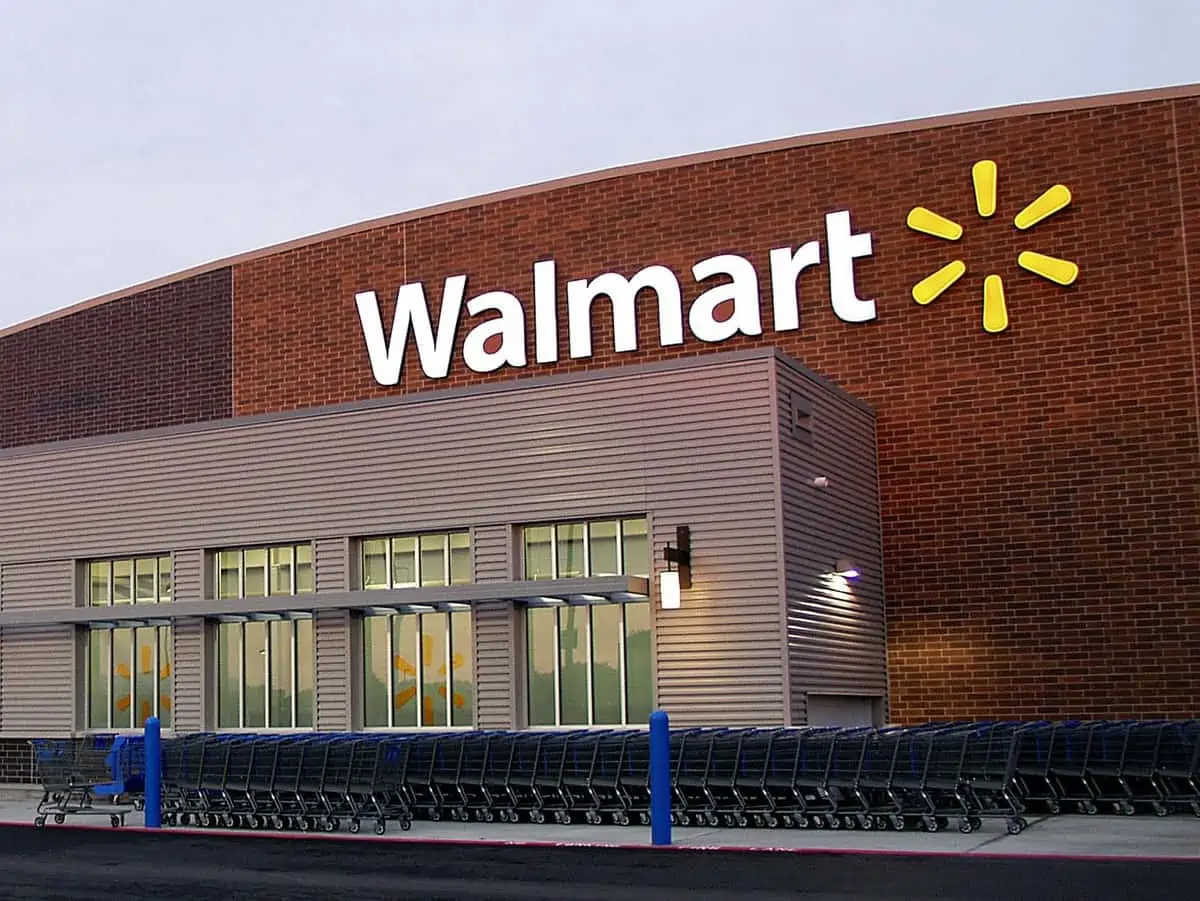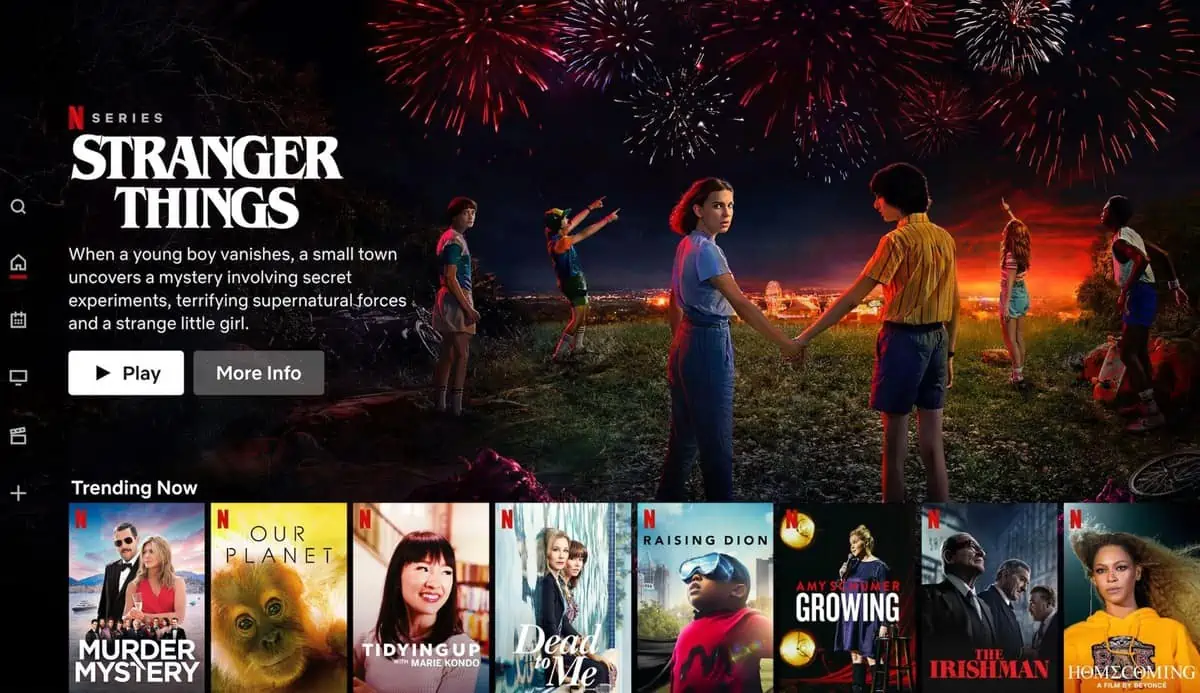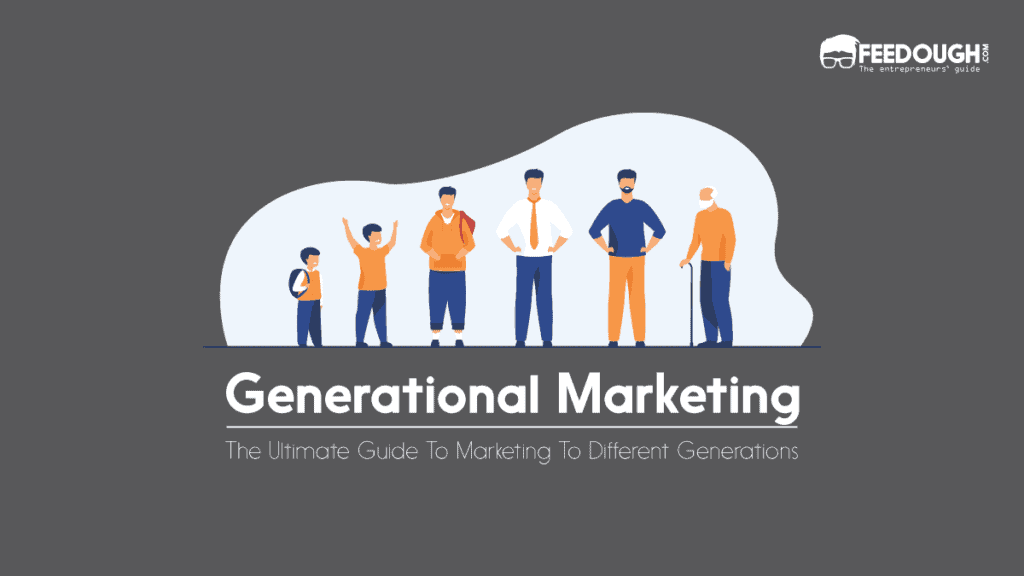Generational Marketing: A Guide
'Your customers are your business,' essentially because you are not selling a product or service; you are selling value to your customers. The worth you offer meets their needs and generates demand for your offering.
That being said, defining target customer segments for your business and digging deep into the needs of those segments becomes very important. There are many standards for identifying the right set of customers; however, we will discuss how to different demographic cohorts keeping in mind our marketing goals.
What Is Generational Marketing?
Generational Marketing is a strategy whereby a business promotes its offering by segmenting and targeting its customers according to different age groups.
It is a marketing practise where a business focuses on the varying needs, behaviours and spending power of people from different age groups.
Different generations have distinct characteristics, traits, and spending behaviours that need to be understood to reach them through the right channels – ultimately leading to an increase in revenue.
Why Is Generational Marketing Important?
Generational Marketing is merely a way to understand different generations. This understanding helps businesses gain insights into consumer needs and preferences to offer what they want precisely.
The marketing strategy is employed to understand the social, political, economic, and legal factors affecting people from different age groups. This knowledge helps them better understand their behaviours, preferences, likes and dislikes, value system, etc.
With the help of generational marketing, businesses exactly land in their customers' shoes. They are in a position to decide on:
- How to propose the worth of their offering?
- What promotional technique to be used
- What communication channels to be employed
- How to optimally price their offering
Therefore, they gain a competitive edge over other brands.
The said businesses devise effective marketing campaigns. They reach out to their potential buyers in the best possible way by proposing a befitting worth through their offering, using a suitable promotional technique, selecting the most preferred mode of communication, and pricing according to the habits and mindsets of different age groups.
What & How To Market To Different Generations?
Baby Boomers
1946 - 1964
Generation X
1965- 1980
Millennials
1981-1996
Generation Z
1996-2015
How To Market To Baby Boomers?
Baby Boomers constitute people aged between 57-75 and are most probably planning to or have already retired. They have a considerable chunk of accumulated savings, which gives them immense purchasing power.

Marketing Mix For Baby Boomers
Keep in mind the following factors in order to market effectively and efficiently to a Baby Boomer:
Product
Baby Boomers value quality and look for helpful information. They spend money, not on products and services, but pleasant experiences. Therefore good customer service, easy purchases processes, etc., appeal to them greatly.
Moreover, they want to feel valued. Therefore empowering them through customised offerings is a great way to lure them.
A Baby Boomer prefers the product that is:
- Worthy in terms of quality
- Simple to understand and adopt
- Informative
- Convenient to purchase
- Easy to use
- Customised to their needs
- Empowering
A Baby Boomer does not prefer the product that is:
- Very technical and complex
- Lacks clear information
- Poorly curated
- Difficult to reach
Price
Baby Boomers are a wealthy lot owing to massive savings and disposable income. Therefore they are in a position to purchase expensive products. However, they will only buy it because of its supreme quality and overall experience. They also prefer expensive-looking products but at the same time bargain for discounts.
Place
Baby Boomers rely a lot on the offline geographical marketplace, essentially because they get the touch and feel of the product. However, they have evolved and adapted well to the online market. It is so because even the online marketplace provides them with all the information they are looking for, which develops trust in the brand.
They respond well to traditional means like television and newspaper. They want a lot of information about the product, and video ads and print ads essentially give them all the helpful information.
Besides, although they have been brought up without technology, they have embraced modern forms of technology. They actively use Facebook accounts through their smartphones and research online while making purchases.
Promotion
Baby Boomers crave good experiences, and good deals are a part of it. They are essentially the 'me' generation and want acknowledgement. Therefore any offering that makes them feel recognised and taken care of individually attracts them. For example, personalised coupons, special offers, festive discounts, etc., are a great way to promote a product among Boomers.
Case Example - Cheerios
Cheerios has established its name as a nutritious breakfast option catering to all age groups since 1941. However, Baby Boomers particularly choose the iconic cereal brand as they have been attached to it since childhood and continue to love it as adults.

- Product: Cheerios has always emphasised health concerns for the Boomer cohort as a brand. It underlines the ageing factor of the Boomers in a light-hearted way by introducing healthy meals, which makes them feel empowered.
Moreover, they have been enjoying Cheerios products right from their childhood, which is why even at present, they trust it because of its premium quality and taste. Moreover, it makes them feel young, as they are reminded of their past and makes them feel valued. - Price: Cheerios is the leading ready-to-eat cereal brand, accounting for $481 Million in revenues in the US in 2019. The brand has gained popularity among Baby Boomers because of its worth in exchange for its minimal prices.
The brand has adopted an economical pricing policy and kept its prices at a minimum so that everyone can easily purchase it. It has maintained such prices across all its varieties and flavours. Nonetheless, it can still bag enough profits year after year due to the magnitude of the enormous sales. - Promotion: Cheerios effectively promotes its products through print ads in newspapers and magazines and captivating commercials on television and radio. Moreover, to increase their online reach and empower the Boomers, they launched webpage contests with prices worth $500,000. The brand has used direct mail, scholarships, and other targeted online means.
Moreover, to gain popularity among the health-conscious Boomers, the brand stopped using genetically modified ingredients for producing its products. Later they also introduced a gluten-free product range as well. - Place: Baby Boomers prefer products that are within their reach. And Cheerios, a subsidiary brand owned and marketed by General Mills, has a strong distribution network across retail stores and grocery stores. Their convenient locations make Cheerios readily available to all. Moreover, they have close tie-ups with supermarkets like Walmart with 11,000 stores across 28 countries.
How To Market To Generation X?
Generation X constitutes people aged between 41-56 and commands authoritative positions in households and workplaces. They are the chief earners and make significant purchase decisions for their households.

Marketing Mix For Generation X
Consider the following factors to market an offering to Generation X effectively:
Product
GenXers are vigilant people and look for genuine products. They prefer products that give them a sense of security. The offering they buy should have an actual use to make their life convenient.
Moreover, they are tempted by anything that makes them nostalgic. The offering that makes them feel valued and reminds them of their past ideally captures a GenXer.
A GenXer prefers a product that is:
- Genuine in purpose
- Authentic and socially approved
- Personalised for them
- Reminds them of their past
- Easily exchangeable and returnable
- Available with discounts and offers
A GenXer does not prefer a product that is:
- Lacking practical usage
- Complex to use
- Lacking customer service
- Hard to try and test
- Not personalised
Price
Gen Xers are one of the most conservative lots of buyers. They look for authenticity in their purchases. They would be ready to pay any price for a product that makes them believe in its value. Therefore once they understand the practical uses of the product authentically, they would purchase it.
However, they look forward to discounts. GenXers have grown up collecting coupons in the newspaper to get freebies. They wait for sale periods and look for special coupons and deals before buying a product.
Place
Traditional media like TV, newspaper, and radio effectively grasp a Gen-Xer's attention as they spend quality time engaging with such media.
Nonetheless, they have readily adapted to technology and can be targeted on smartphones. They can be approached through digital print media, emails, websites, and social media platforms. Moreover, the generational cohort actively uses platforms like Facebook , Twitter, and Youtube than any other cohort.
GenXers may have embraced online shopping, yet around 72% still prefer brick and mortar stores for making purchases. This is because they learn about the offering through salespersons and thereby develop trust in it before making a purchase.
Promotion
Building brand trust is the key to promotion among Gen X. They tend to stick to the brands that give them good customer experiences and worth. Therefore loyalty programs, special memberships, and credit discounts go a long way in capturing Gen X. It is interesting to know that sometimes they may be interested in the brand just because they noticed some discount offer in the first place.
GenXers also pay a lot of attention to details, so providing them catchy video content explaining the uses of the product instantly turns them into buyers.
Case Example - Walmart
Walmart has established its name as the No.1 American multinational retail corporation. Its retail chain operates hypermarkets, departmental stores, and grocery stores in the United States. Moreover, it serves approximately 10,500 stores under 48 banners through 24 countries and eCommerce websites and is the favorite brand of GenXers.

Product: GenXers love Walmart because they get everything they want under one roof. It hosts a wide range of products, including groceries, furniture, wellness, entertainment, electronics, etc., and is equipped with the latest launches.
Moreover, they procure in large quantities to achieve economies of scale and further offer discounts to their customers, which is why Gen X can't live without Walmart. Besides, it maintains exclusivity by white labelling offerings available only at Walmart.Price: The pricing policy of Walmart has essentially influenced the success of the brand. Walmart has adopted a strategy of customer-friendly prices to boost bulk sales. Moreover, they shun over-pricing their products and keep their costs minimum.
Besides, Walmart has a diversified range of products with excellent procurement strategies and rope in products from the best player at the lowest price. Universal barcoding further enhances operations and reduces supply chain costs.
This, along with flexible payment and credit options, make GenXers stick to the brand.Promotion: Walmart offers all-season discounts and promotes the same through TV ads, Billboards, social media, and their eCommerce site. They use slogans like 'save money, live better' and 'everyday low prices' to magnify the effect and lure more and more GenXers to it.
Besides, they offer excellent customer service, making GenXer's customer experience personalised. The brand offers flexible and secure shipping options for online purchases, return policies, and warranties for most of its products, which makes its customers feel secure.Place: Walmart has established a strong online presence through its e-commerce website. It has a well-established distribution network that makes procurement and delivery of goods seamless. The brand has advanced IT systems that enable tracking goods in each stage of transit, thus providing excellent customer service.
Besides, the brand has established a solid offline presence as well. Walmart is located at strategic geographical locations, particularly in the USA, and has a fleet of delivery trucks for efficient door-to-door delivery. This makes the retail store offerings easily accessible from any part of the location.
Moreover, Walmart has brand differentiation across different outlets, namely Walmart Supercenters, Walmart Neighborhood Market, Walmart Express stores, and Walmart Discount Stores.
How To Market To Millennials?
Millennials constitute people aged between 26-40 and contribute maximum to the active workforce. Moreover, quantitatively they form the largest generation. Therefore, they have massive earning and spending capacity.

Marketing Mix For Millennials
Consider the following factors to market an offering to millennials effectively:
Product
Millennials have emerged with fast-paced technology. The offering should be innovative and time-saving. Moreover, they are vigilant and acknowledge social issues. Therefore, businesses should design their offers sustainably, promote a social cause or strengthen their brand ethics to attract them.
A Millenial prefers products that are:
- Innovative
- Time-saving
- Backed by social welfare
- Cost-effective
- Technologically advanced
A Millenial does not prefer products that are:
- Old fashioned and uncreative
- Overly-priced for their worth
- Not in trend with technology
- Not in support of a social cause
Price
Millennials are early on in their careers; they work hard to meet their ends. They prefer cost-effective offerings. They equate worth closely with price, so they may pay a higher price if they are convinced of its high worth.
Moreover, they habitually prioritise their purchase decision. Therefore curating a product with genuine worth and good customer experience becomes essential as millennials shun impulsive buying.
Place
Millennials prefer both online and offline marketplace. However, the cohort is tech-savvy and relies highly on online purchases. This also gives them access to the latest products and detailed reviews and feedback.
In addition, millennials are the most active generation across all social media platforms. Paid ads and promotions on Instagram and Facebook are very effective in capturing. The generation spends most of the time online, therefore traditional means should not be adopted. Ecommerce websites, apps, streaming platforms like Netflix would be a good choice to reach out to Millenials. Here again, creativity impresses Millenials the most.
Promotion
Millennials give a lot of importance to social validation and trials. Therefore reviews, feedback, influencer and word of mouth marketing, product demonstrations, etc., play an essential role in shaping their purchase decisions.
Besides, they look for cost savings, therefore offering deals, more extensive packaging, festive savings, etc., appeal to them greatly.
Case Example - Apple
Apple is a multinational tech company specialising in consumer electronics, software, and online services. With operation in 516 stores across 25 countries, the brand turns people into its fans through its smartness and creativity. Moreover, it is the most favourite brand of Millenials in the USA.

Product: Apple is a leading tech brand across the world. And it gets the stronghold in the global market owing to its creative product mix. Moreover, 'innovation' is synonymous with the Apple brand, thus attracting millennials. Apple's products are few yet strong and innovative to beat the competition.
Curated after lots of research, the brand offers technology-driven solutions through its Mac (range of laptops), iPods, iPhones, iPads, Apple Watch, Apple TV, digital content (digital music, videos, e-books, and games), cloud services, software, and accessories.
Another contributing factor of the Millenial fan-following is Apple's sustainability plan. The brand is already carbon neutral and is making energetic efforts to make apple products around the globe 100% renewable by 2030.Price: Apple has adopted a premium and freemium pricing strategy.
Apple products are available at a premium price compared to other competitive brands. This premium price charge essentially maximises their profits. But millennials are ready to pay a higher price because of the premium branding and creative innovativeness.
In addition, Apple also provides specific services through the freemium model by combining the 'free' and 'premium.' Under this strategy, the brand offers particular services for free but charges for better and advanced features of those services. For example, it provides 5-gigabyte iCloud storage for free but charges for extra storage space.Promotion: Apple is known for its out-of-the-box promotions. It promotes its offering to highlight 'what's new' and sets its apart from its rivals through various promotional techniques.
The brand advertises through Google advertising network and various technology news websites. This gives millennials lots of context, helpful information, and a sneak peek into product reviews.
The brand does personal selling through store employees, who assist visitors in making purchases in the store, which provides an excellent customer experience to millennials.
Apple Inc. does sales Promotion in the form of selling old models at discounted prices bundled with more extensive and more expensive products.
Moreover, Apple Events, upcoming teaser launches, product features releases, press releases, etc., build a positive corporate image.Place: Apple sells its products through Apple Store locations, company-owned websites and online stores for desktop and mobile, authorised sellers, and telecommunications companies. The appropriate balance and comprehensive distribution channels make the brand stand out.
Reliable and trusted telecommunications firms like Verizon, AT&T, etc., large retail stores like Flipkart and Amazon, and Apple's eCommerce website build a robust online presence.
Apple stores, a chain of authorised resellers, and tie-ups with retail chain stores like Walmart have made the brand offerings easily accessible to millennials.
How To Market To Generation Z?
Generation Z constitutes people aged between 7-25; they are the youngest demographic cohort and the most creative and advanced lot.

Marketing Mix For Generation Z
Consider the following factors to market an offering to Generation Z effectively:
Product
Authenticity of the product is the key. They look for relevant, brief, and credible information while making purchases. Therefore, real people's testimonials, reviews, star ratings, feedback, etc., go a long way in attracting Generation Z.
Moreover, they are not just looking for a product; instead, they are looking for a brand that shares the same values as theirs. Therefore, they run after customised offerings and the best personal experiences.
A GenZ prefers products that are:
- Authentic
- Rated and reviewed publicly
- Personalised to their needs
- Socially impact
- Closely aligned to their values
A GenZ does not prefer products that are:
- Endorsed too much through paid marketing
- Not customised and exclusive
- Not in line with their identity
- Nil in social value
Price
They are ready to pay the price for a product that helps them build an identity. In other words, the products they purchase should closely align with their personality.
Besides, social acceptance and advocacy, striving, and sustainable brands also pitch significantly to them, and they readily pay for them too. However, they are not financially independent or early in their professions; therefore cannot afford to spend as much as the other generations.
Place
People belonging to Generation Z are digital natives. Therefore, online marketing is the key to attracting them. OTT platforms, Instagram, Snapchat, Youtube, location apps, games, etc., are wise choices while capturing people's attention to Generation Z.
Moreover, a study by ResearchGate suggests that while Generation Z still purchases through brick and mortar stores, they mostly prefer shopping online with their smartphones.
Promotion
People belonging to Generation Z want to connect with the brands. In other words, they want to know everything about the brand because they make purchases according to their identity.
Therefore building trust in the brand becomes very important. This can be done through brand engagements in micro-influencing, social media competitions, events, behind the scenes, customer experience blogging, shout-outs, etc., which can be adapted to acquire and retain customers belonging to Generation Z.
In addition, the recently evolved generation has a brief attention span of 8 seconds. This is why making them interested in the product becomes essential in the first place. Therefore visual imagery hooks them better than a lot of words.
Case Example - Netflix
Netflix is the top global over-the-top media streaming and original media streaming company. With an enormous subscriber base of 213 million across 190 countries, Netflix has become the world's major internet television network and emerged as Generation Z's favourite.

Product: Initially started as a DVD rental business, Netflix has emerged as a major online streaming platform by providing an extensive library of feature films, documentaries, TV shows, anime and award-winning Netflix originals. Exclusive, trendy and latest content is available ad-free on the platform. Thus aligning closely with the identity of the GenZ.
Moreover, Netflix constantly invests in curating and presenting content that suits its users. Detailed categorisation of titles on the basis of genre, language, ratings, age preferences, automated suggestions and watch-list matches are a few ways in which Netflix customises user experience for Gen Z.Price: Netflix follows a value-based pricing model. In other words, it offers its services through different values attached to different prices. It currently offers three subscriptions plans: basic, standard, and premium based on video quality, resolution, and device compatibility.
Moreover, it has priced its offerings in a way to make people choose the plan that's right for them. This makes Netflix appeal to the GenZ in the most authentic and customised manner.Promotion: Netflix has always adopted the most creative ways of advertising its offerings.
In the very first place, it lures users by providing a free one-month trail. Essentially this test and trial scheme attracts Gen Z because they can know the brand and develop trust by using it before even paying for its services.
Secondly, Netflix has leveraged social media to attract the digital natives, mostly belonging to the generation Z. It engages with the users through Youtube reviews, content based on favourite Netflix shows and characters, occasion-specific events etc.
Moreover, since they are already a popular brand, they just advertise using pop-up ads, banners, hoardings and other static ads on websites. They also use marketing video ads about upcoming shows and movies featuring celebrities and icons to create a buzz.Place: Netflix services offer tangible as well as intangible products.
The brand offers mail-in DVDs to its users sent directly to customers' doorstep as well as online subscription model services. In this way, its services are directly delivered to the customer.
Moreover, keeping up with the GenZ lifestyle, the brand also made available its services through different platforms like Playstation, Xbox, Nintendo Wii etc. This makes the service accessible through different devices frequently used by the GenZ, thus giving a good user experience to them.
Explore The Next Chapters

